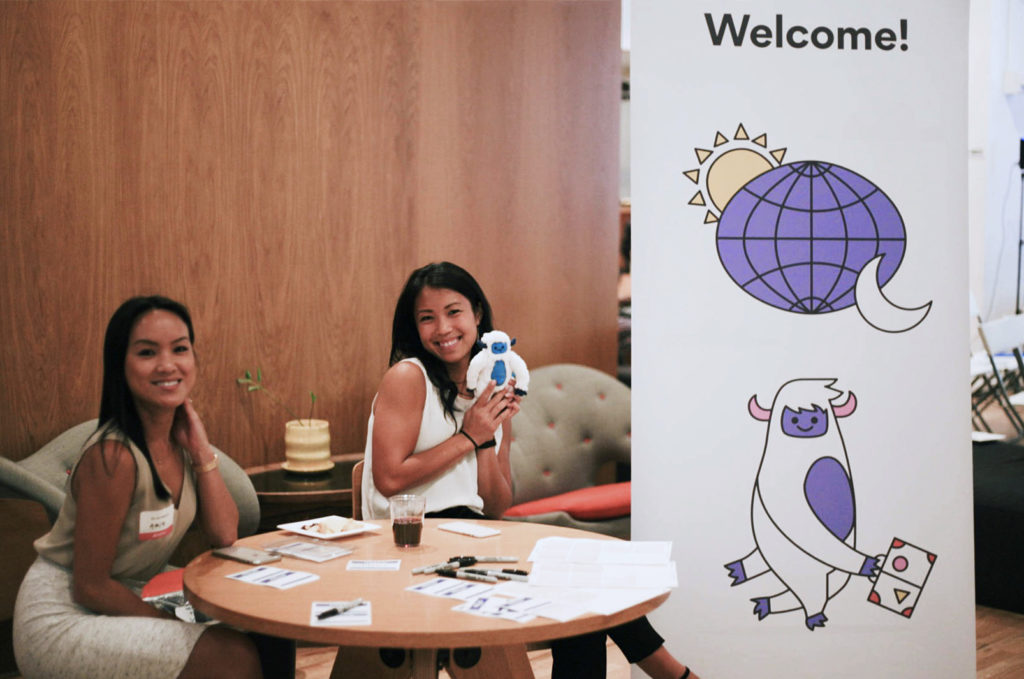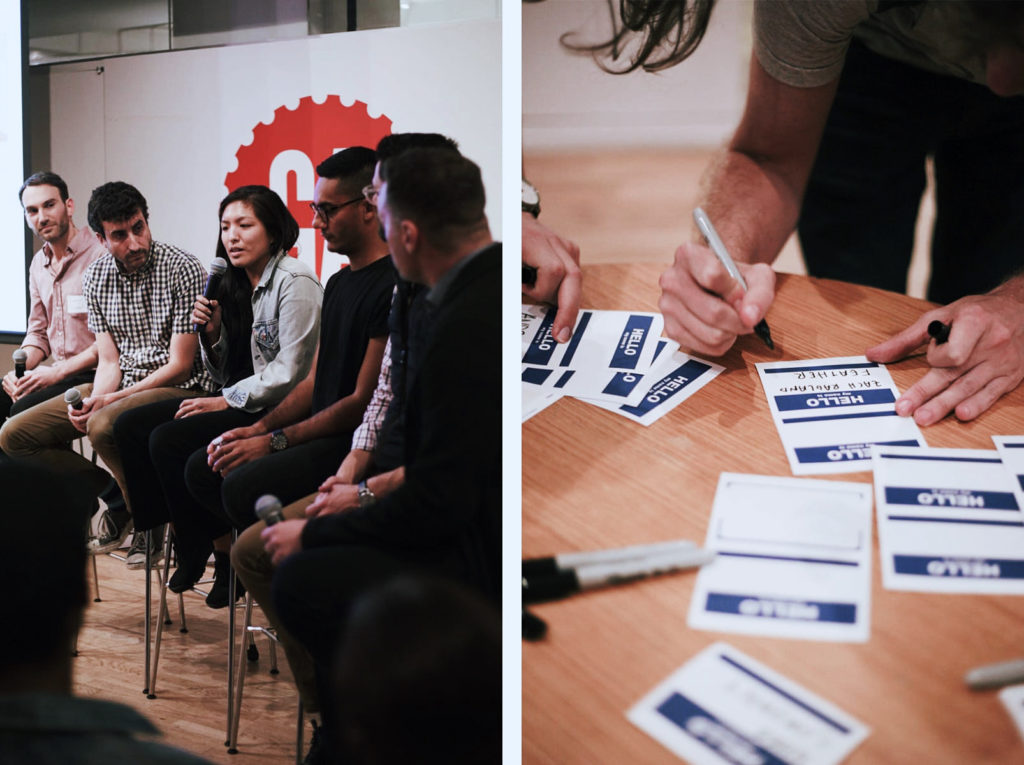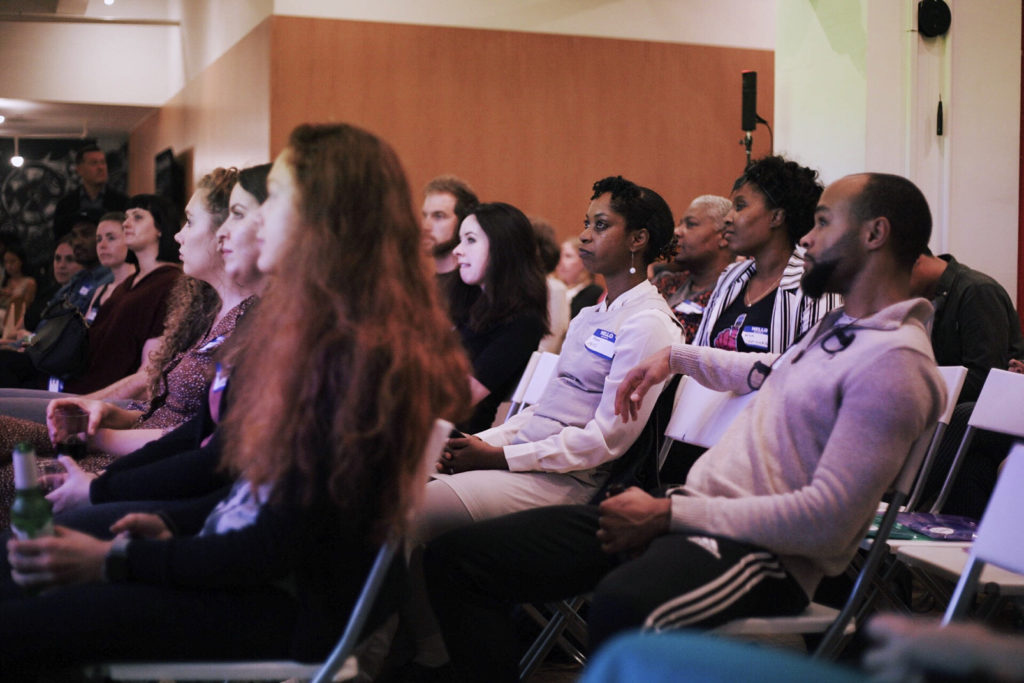Asana Together in New York: 4 Tips for achieving your goals as a team
For the past few weeks, the Asana Together World Tour has been making its way around the world, from New York to São Paulo and Rio de Janeiro to Berlin. At each stop, we’ve had the opportunity to connect with our community of amazing customers and host workshops and events.
In New York City, we met with customers from the media, apparel, television, production, finance, and fashion industries. Our panel event featured several Asana champions who shared their best practices for teamwork. The panel included:
-
- Shyam Panchal, Global Director of Commercial Products at VICE Media
- Tommy Dikerman, Co-Founder and Chief Product Officer at Comeet
- Ivy Liu, Senior Creative Project Manager at Away
- Mike Singer, Director of Digital Programming at Food Network
- Andrey Ostrovsky, CEO at Concerted Care Group

The panelists discussed how they work with their teams to set goals, prioritize work, and manage changes—like introducing Asana to their teams. They shared the nuances of each of their respective industries, workflows, and team dynamics. Guests walked away with some great insights on how to work better as a team. Here are some of the main takeaways from the event:
1. Know your destination: Set goals from the start
One of the most important things to do with your team is to make sure everyone’s heading towards the same destination. Goal setting can feel like an overwhelming task, but it’s important for alignment, motivation, and achieving the vision you have.
Andrey and the Concerted Care Group team set goals by looking at their True North, which is to improve clinical outcomes. Because they’re focused on tackling the opioid epidemic and everything can be a priority, it’s important for them to have one goal in mind. Once they are on board with their True North, they “align on what can help [them] get to that result, such as getting a number of people into care,” Andrey explained. They focus on setting S.M.A.R.T—specific, measurable, achievable, concrete, and time-specific—goals. After goals are set, responsible teams are given flexibility in how they achieve them.
2. Focus first: Prioritize before you act
The first step in achieving your goals is deciding what to tackle first. Sometimes, everything can feel mission-critical, but there’s always a way to dig deeper and understand what needs your attention now and what can wait. It’s helpful to establish what success looks like and what will be measured, and evaluate tactics based on how they’ll contribute to that success.
Ivy from Away, a company that makes luggage, is always prioritizing work for herself and her team. As the Senior Creative Project Manager, she monitors everyone’s workloads and helps decide what takes the top slot on folks’ to-dos. When it comes to prioritizing, she suggested always “providing context, letting people know what your intention is, and being direct about what your needs are.” Then you can dig into what resources are required and the expected outcomes. Weighing the two against one another can help lend clarity to what will have the biggest payoff and what to work on first.

Mike from the Food Network, who oversees all digital programming for the network—over 600 videos each month—knows that prioritization is as important as following a recipe in order. For him, one of the most important parts of prioritizing is cross-functional communication. “What we’ve realized is that the best way to balance priorities across teams is to have fewer tools and strive for clarity of communication. The idea is to get everybody in the same sandbox: While there are still different priorities, there’s transparency into what everybody else is doing, so each individual can better understand what they’re responsible for.”
3. Keep in touch: Communicate early and often
With goals set and priorities clear, you might think your team will be smooth sailing. Unfortunately, as our panel explained, it’s not that simple. Communication is key to staying on track to achieving your goals, adjusting priorities, and keeping your entire team engaged.
Mike explained that, “For any workflow, communication is the most important thing, because people—especially when they’re on several teams—need information and often have trouble finding it.” For example, Mike’s team uses a host of tools, from Asana to Slack, Google Suite and more. If someone is looking for guidelines, a specific asset, or context around their work, it’s crucial that they’re able to easily communicate with their team, or they could be on a wild goose chase for quite some time.
Communication can also contribute to goals other than those set for the business. “Another big part of working together is inclusion,” says Mike. “People naturally silo themselves, so it’s especially important to facilitate communication so that folks aren’t isolated.” Keeping everyone in the loop can contribute to retention, engagement, and team morale.
4. Drive change: Show value, and start small
Change is often the only constant in business, but managing change with your team is no small feat. Introducing new software (like Asana), processes, or team members requires attention to detail, empathy for those experiencing the change, and a plan.

When it comes to rolling out new software, Ivy has had success with balancing training with showing value to team members. “I think it’s really easy to say, ‘Oh, we do things this way, and you should too,’ but showing how something is useful to them makes all the difference,” she explains.
For processes, Shyam from Vice takes a product approach of testing. “After all, processes are testable items,” he says. Explain to your team that the new process is a test, you’re open for feedback, and things will change if it’s not the best solution.
If you’d like to connect with our team and your local Asana Together community members, visit our our events page to register for an Asana Together event near you!

